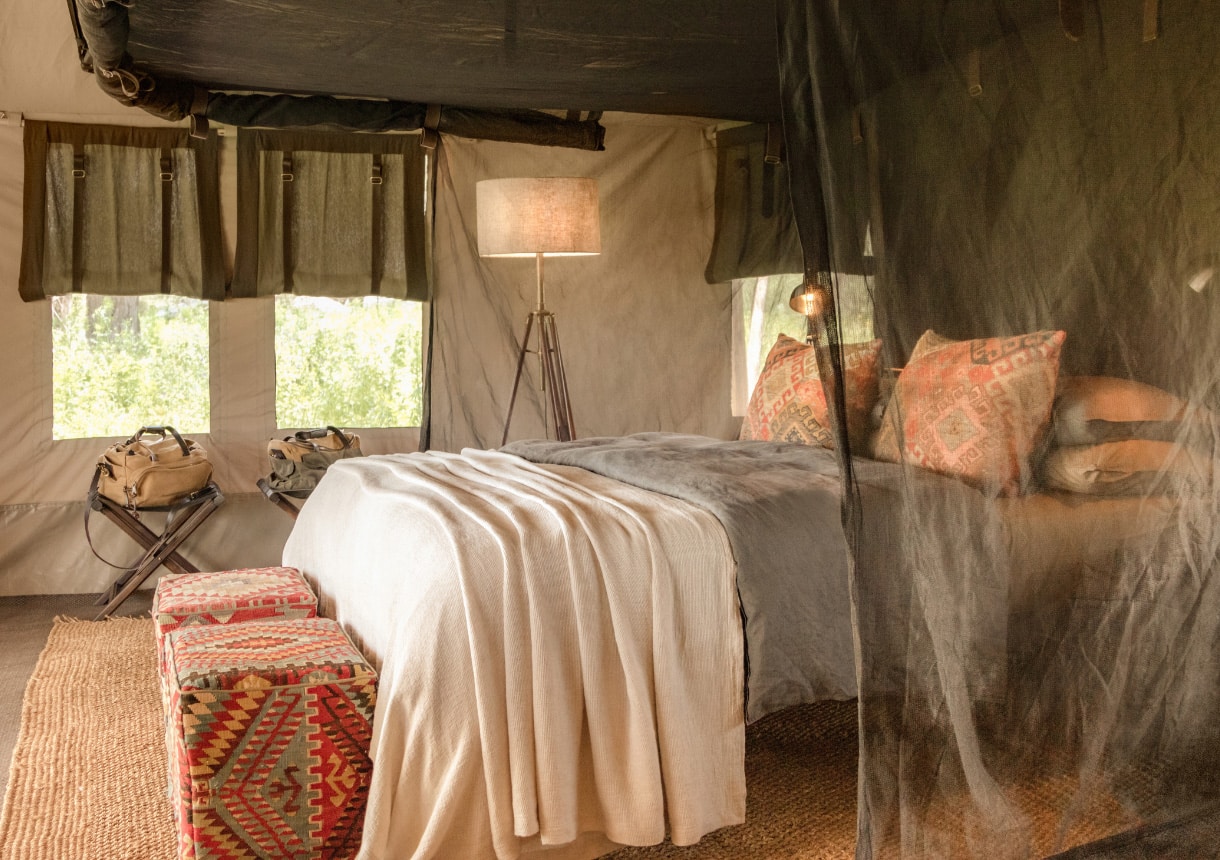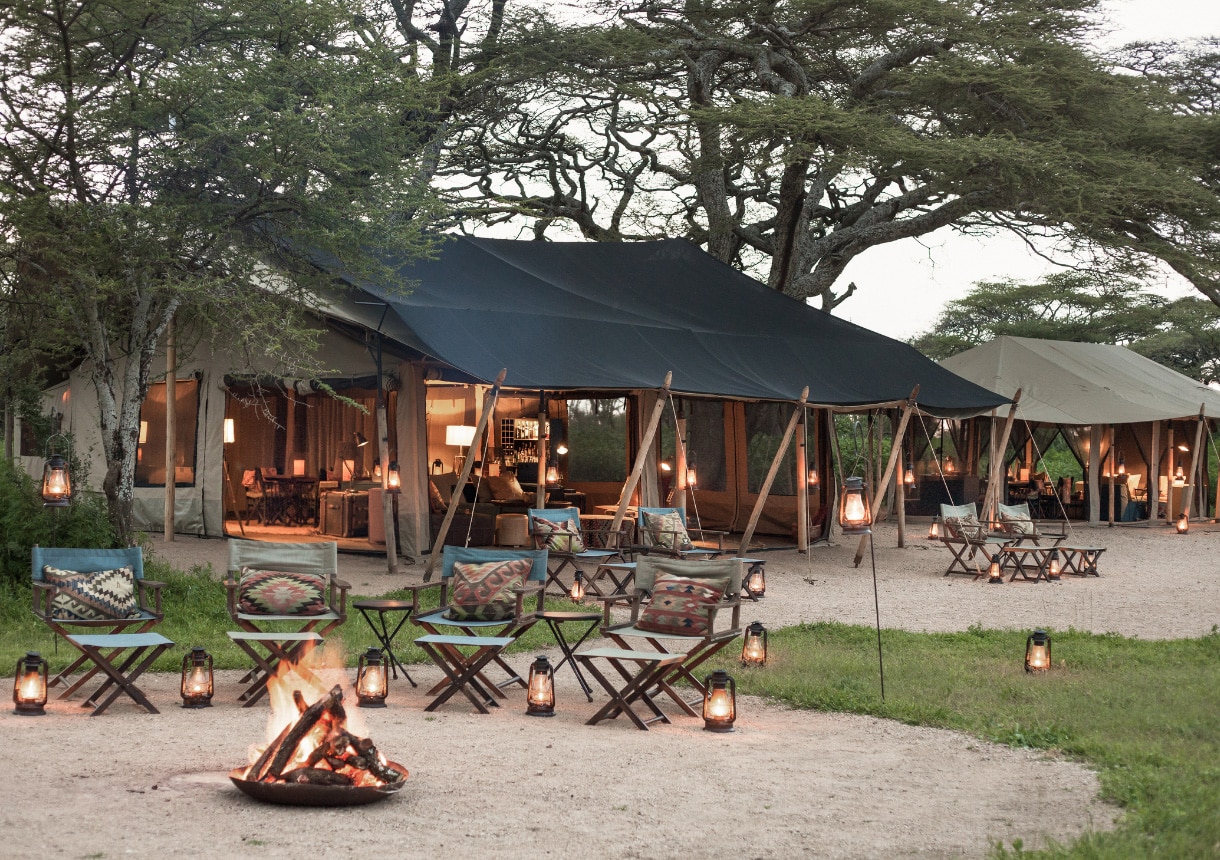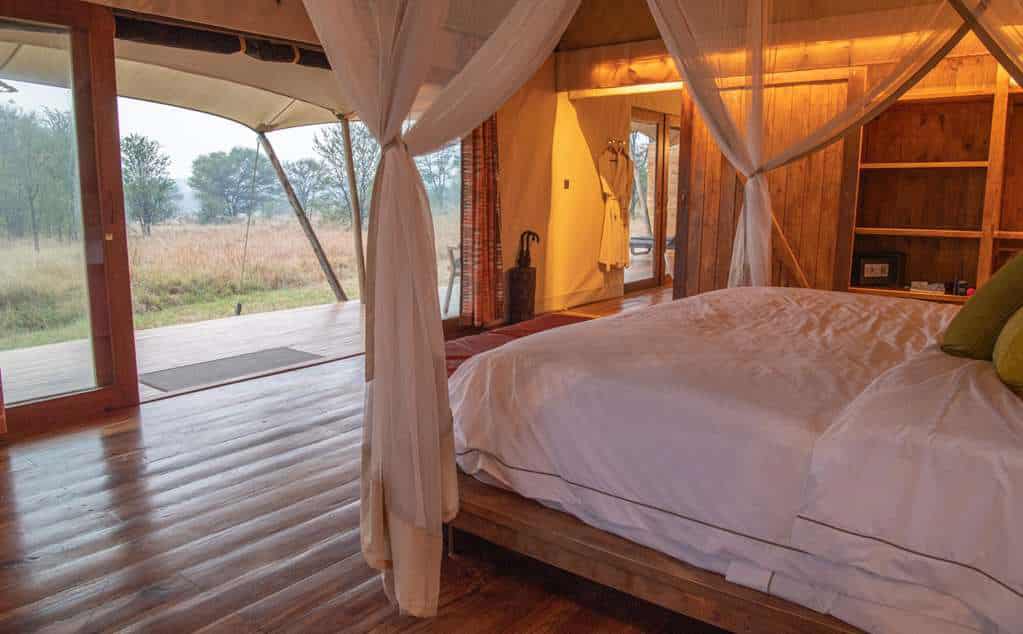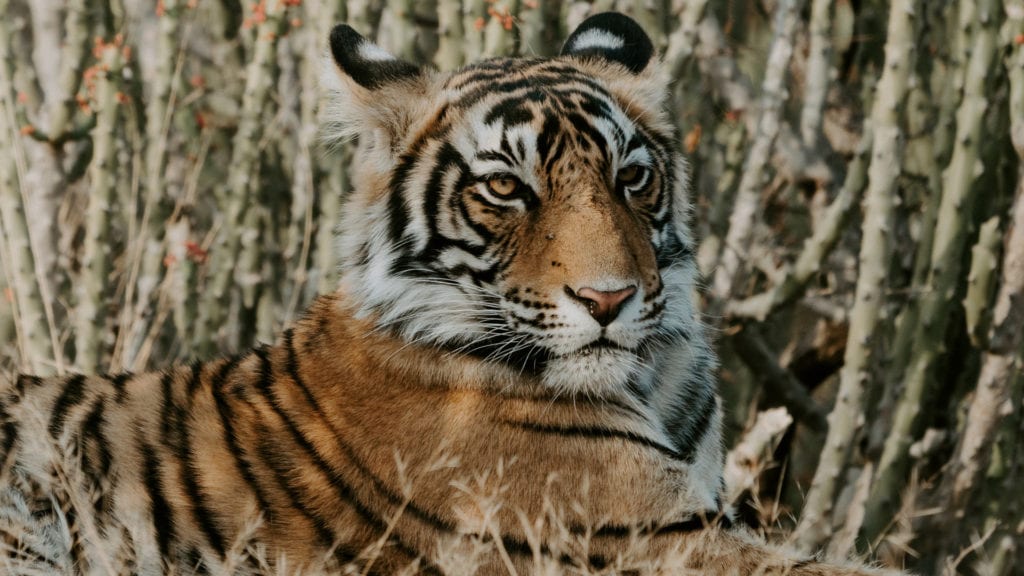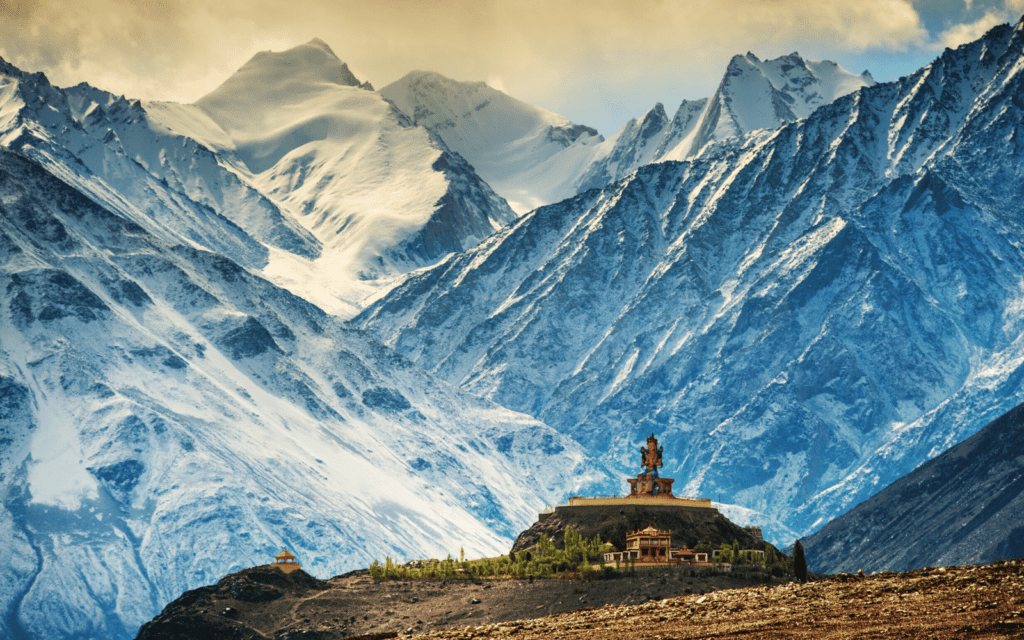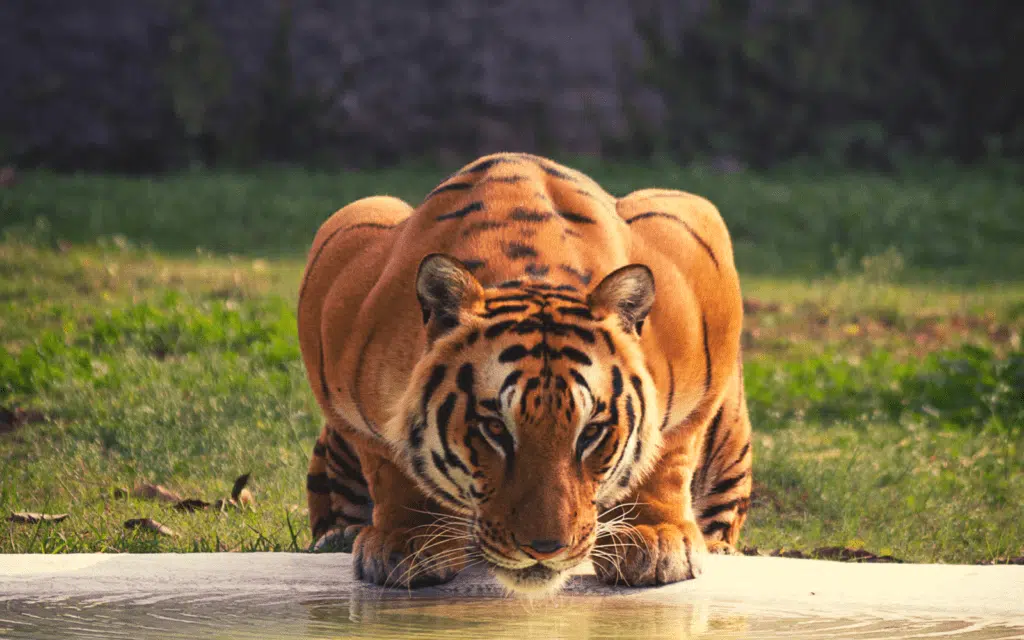A CAST OF 2,000,000
Finding Solitude in the Great Migration
The Great Migration: one of the most iconic sights of an African safari.
There’s no doubt that the sight of 2,000,000 ruminants wandering the plains of Kenya and Tanzania – and the many predators that follow them – is a powerful drawcard for many safari travelers.
More than worthy of the attention, this comes with the trade-off of sharing the experience with sometimes dozens of fellow observers and the numerous game vehicles that bring them there. Despite a river crossing being a once-in-a-lifetime sight to behold, the potential horde of visitors you may be sharing the experience with can somewhat detract from the moment.
The Great Migration is in constant flux, on the move year-round and spanning the border between Kenya and Tanzania. Comprising predominantly wildebeest, up to half million zebra and many other herbivorous species join the largest of the antelope family. And with them, of course, come the big cats. Lion, leopard, hyena and cheetah stalk their prey across the grasslands, taking advantage of sick and newborn animals, with up to one-fifth of the number not surviving the annual circumnavigation.
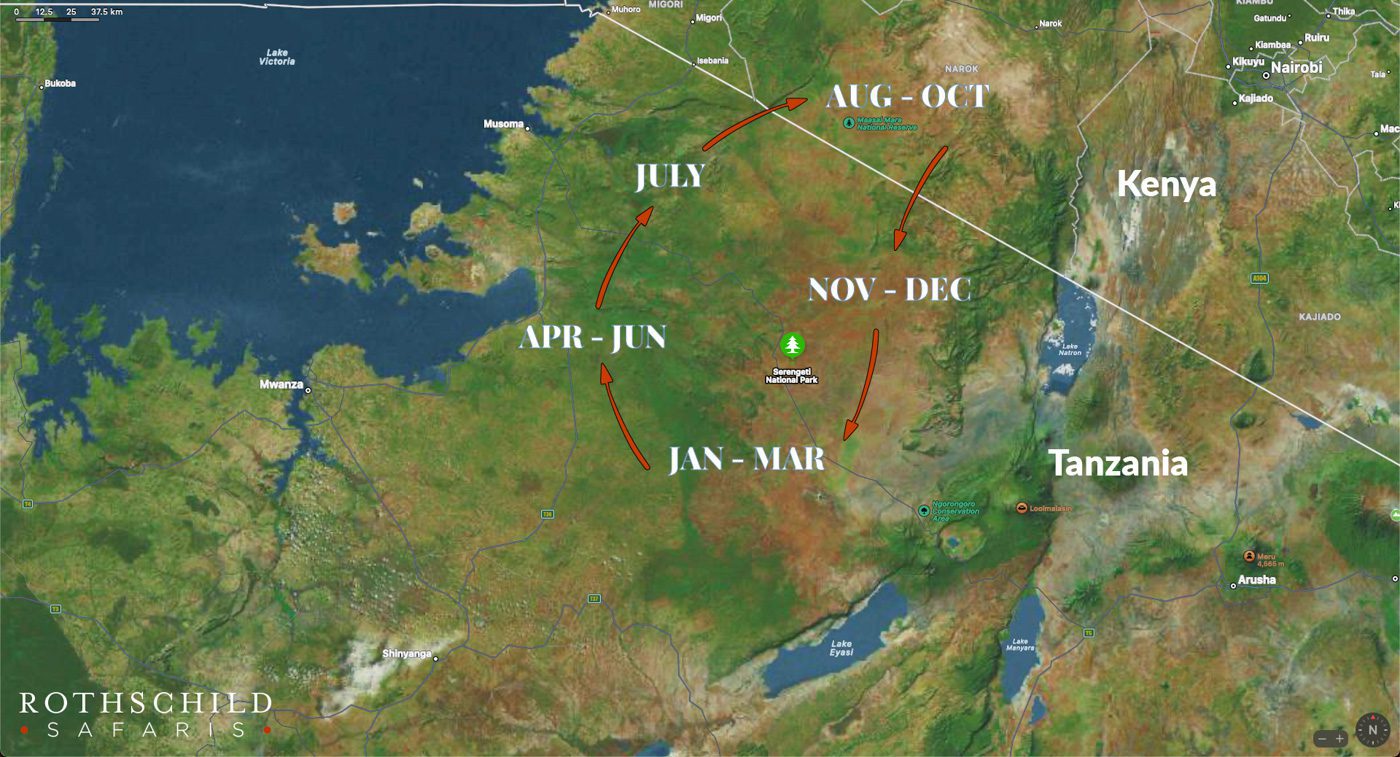
There is little safety on the wide-open expanses of the Masai Mara and Serengeti, and rivers are no less perilous. Vast herds approach the steep banks, jostling for position, almost daring each other to, quite literally, test the waters where the ferocious and hungry mouths of crocodile await. As if on command, a wave of wildebeest cascades over the precipice, their safety in numbers no less vulnerable to the awaiting crocs. Tragic though it is, this spectacle is a marvel of the raw and dramatic nature of nature.
Whilst we cannot promise absolute exclusivity, there are several locations and luxury camps that are able to drastically minimize the crowds of onlookers in more populous regions. If the Great Migration has been scrupulously penned onto your bucketlist, read on. We have gathered together six of the best destinations to witness ‘the greatest show on Earth’.
KENYA
Of its 12-month, 1,200-mile (1,930km) route, the Great Migration spends one-third of its time in Kenya’s Masai Mara, spanning the months between August and November. However, close to the border with neighbouring Tanzania, the Mara River is regarded as the best location to observe the dramatic river crossings. The Mara is also barely one-tenth the size of Tanzania’s Serengeti, making it more accessible to the masses. This can often lead to crowds at the critical moments of the migration’s passage, but establishing yourself at the right property can be the difference between a front-row seat and catching a glimpse from the back of the pack.
Serian Nkorombo
This wonder, classically ‘Selous-style’ safari camp nestles on the banks of the Mara River and adjacent to a popular ‘salt lick’ where animals gather to ingest vital salts that are an abundant source of minerals such as calcium, zinc and magnesium. Within walking distance lies a frequented river crossing location, with Nkorombo taking full advantage of the action at a moment’s notice.
Even without the migration’s nearby passage, the region is teeming with life, hippos snorting happily in the river and land-borne game, including giraffe, black rhino, lion and leopard fairly common sightings.


The camp evokes the iconic and timeless safari experience, each tented room featuring timber furnishings, en suite bathrooms and sumptuous linen under a billowing canvas roof.
The Serian brand is renowned for its focus on photographic safaris and each camp, including Nkorombo, has a professional photographic guide on hand, helping even the most amateur of lens-smiths hone their skills and maximise the potential of snapping the perfect images of the Great Migration and native wildlife.
Naibor Camp
Though also a mobile tented camp, Naibor offers exceptional opulence, feeling more established than other camps of its kind with a hint of the contemporary to optimize your comfort and services. Each capacious suite features a queen bed and private deck, with armchairs and couches from which to peruse the surrounding bushland.
Unsurprisingly, Naibor is also perfectly located to take in the drama of the Great Migration unfolding within a short distance of the camp. Tucked away in a grove of riverine woodland, Naibor is serviced by several game vehicles, available for daily game drives or to whisk you away at a moment’s notice to capture crossings of the nearby Talek River.
Another feature of Naibor is a cosy yet spacious communal lounge. Here, guests have the opportunity to mingle, share their latest images and discuss the day’s game drives and sightings.
Optimizing its potential in such a prime and pristine location, Naibor offers much more alongside the expected game drives. Visitors can take a guided walk with the Maasai, visit a local community and enjoy beach meals and beverages as the sun slowly descends over the Mara.
It is hard to truly appreciate the enormity of the Great Migration from ground level, but here too, Naibor has the answer. Taking off at dawn, clients can gain an aerial perspective from the basket of a hot-air balloon, viewing the length and breadth of the wandering herds from above.
Kicheche Valley Camp
Similar to Naibor, Kicheche Valley Camp lies in the prolific Naibosho Conservancy. A wonderful sense of escapism imbibes guests with overwhelming peace and tranquility, with nature all but disregarding its human visitors. Though not on the Mara plains or directly on the path of the Great Migration, Kicheche Valley Camp is a property par excellence.

The Naibosho Conservancy one of the highest densities of wildlife in Kenya. Leased from the Maasai people, the reserve has unified the Maasai’s pastoral tradition with modern conservation efforts to the benefit of all – traditional landowners, guests and nature alike.
Falling outside the renowned Mara Triangle, through which the migration passes, the immense herds found in other areas may not be present, but the rich and diverse species in the area more than make up for the lack of tens of thousands of wildebeest.
Though the focus of Kicheche Valley Camp is upon a more conventional game drive experience, the property offers excursions to migration sites in season, and overnight fly camps can position you in a more advantageous and stunningly exclusive location to take in the herds, and even some of the river crossings.
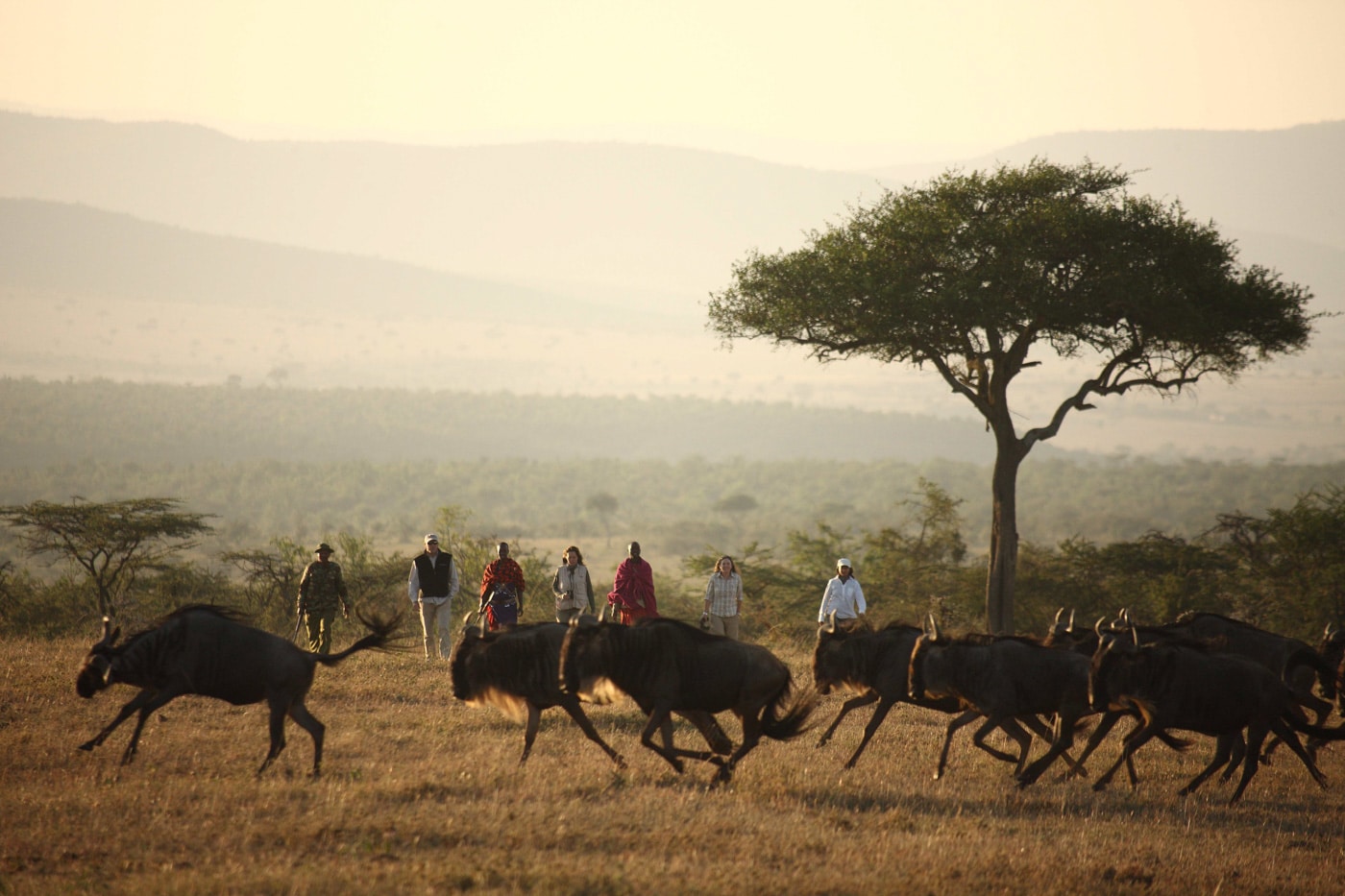
Kicheche’s primary benefit, other than being an exceptional safari camp in and of itself, is that the Great Migration isn’t its sole focus, and extended stays will be highly rewarding on a number of levels.
TANZANIA
Enjoying eight months of migratory passage, Tanzania could be said to be the home of the Great Migration, despite Kenya possessing many of the more dramatic scenes. However, where Kenya and the northern borders of Tanzania are renowned for the spectacular river crossings so synonymous with the migration, through the months on January to March when the herds reach southern Tamzania, it is calving season.
Seeing the rise of new life on the plains is extraordinary and undeniably adorable. Though mothers birth alone and there is no social division of parenting duties, it is apparent that a pervasive sense of protection is shared. Adults will often rally around calves at times of danger, and unrelated wildebeest will chase away threats. And there are many.
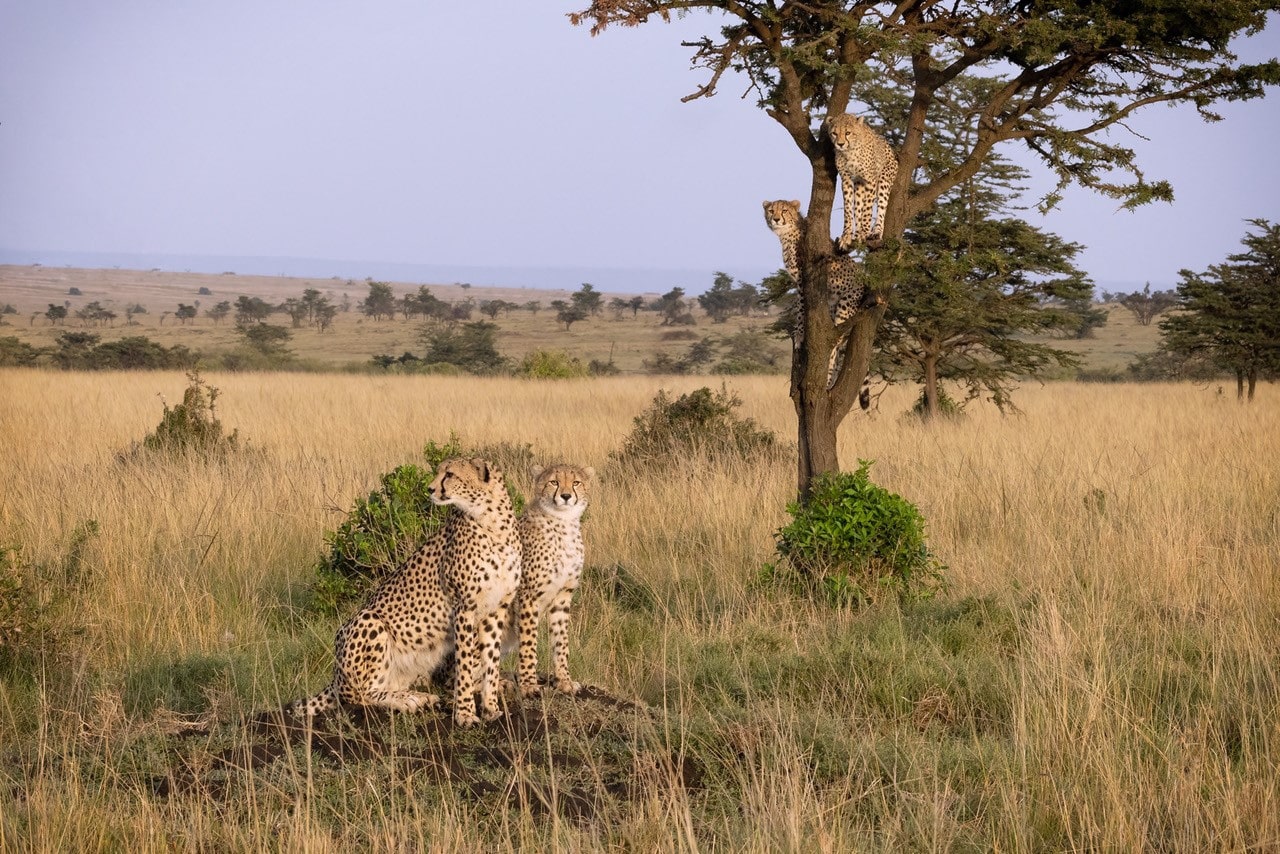
At this time of year, the wildebeest are at their most vulnerable. The youngsters are an easy meal for the predators that folk to the Serengeti for the calving season, and sick and heavily-pregnant mothers can also fall victim to the hungry mouths of the big cats. In some regards, this is tragic and heartbreaking. Yet without this the wildebeest would over-graze grasslands, leading to starvation, and these months also coincide with the arrival of lion cubs, many of which would perish without a readily available food source.
The Great Migration undergoes its greatest changes in Tanzania, last year’s newborns coming of age, the northern river crossings testing their mettle and the arrival of the next generation. For this reason, every month has something to offer, and the country’s scattering of camps each have their own appeal and forté.

Songa Tented Camp
Located in Kogatende in the northern region of the Serengeti, Songa Tented Camp consists of eight en-suite tents and a family tent. Ideally located in the path of the migration, it is not uncommon – at certain times of year – for the camp to be almost engulfed by the migratory ruminants as they amble slowly by.
Many camps describe themselves as ‘timeless’, but Songa is truly that; a time capsule into the halcyon days of safari travel in the early and mid 20th century. Though a permanent camp, one feels as if they might be sharing lodgings with Dr Livingstone or Karen Blixen, ready at any moment to break camp and venture further on their explorations.
Despite this, Songa feels established, luxuriant, even decadent, and its sumptuous heavy hardwood furnishings make one feel entirely at home, despite being in the remote wilds of northern Tanzania under canvas.
The camp has been specifically established close to the path of the Great Migration and, more importantly, within proximity of the exciting Mara River crossing locations. From camp, it is just a short game drive through abundant natural wilderness to the banks of the river to await the descent of the masses.
River crossings are not predictable. They take place at different times and at different locations from year to year, but a certain amount of calculable surety of these moments. The benefit of staying at Songa tented camp is that several spots can be reached with a moment’s notice and the camp’s expert guides are in constant contact with fellow rangers and guides, monitoring the migration’s movements to forecast the action.
Sayari Camp
Also located in Kogatende, Sayari Camp shares all the Great Migration benefits of Songa Tented Camp. Where it differs is that it is a more established property. Though still classified a tented camp, with suites festooned in sweeping canvas, each domicile features hardwood floors, wide private decks and a more contemporary boutique atmosphere. The property incorporates a lavish bar and dining area, in-ground pool and spa, with any impression of camping being in name only.
Superbly appointed on every level, Sayari leaves little to be desired, and the property exquisitely encapsulates the notion of a luxury safari camp.
With 14 suites and one family tent, it is suitable for larger groups and has specifically been developed to also accommodate disabled guests, with ramps and boardwalks designed for wheelchair accessibility. For the infirm or less abled, this is an exceptional opportunity. Remote camps are fantastic for viewing wildlife and a natural immersion, but they can frequently neglect any but the able-boddied. Sayari gives everyone of any age or ability to be able to witness the Great Migration on the plains of the Northern Serengeti with ease.
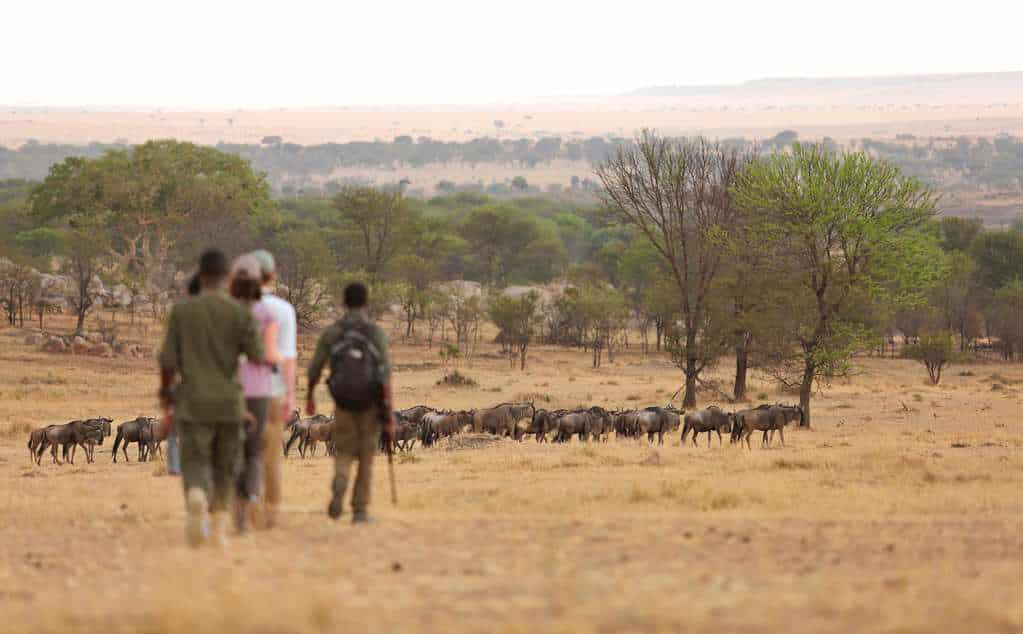
Serengeti Safari Camp
A little further south lies Serengeti Safari Camp. Here, though the river crossings are still accessible, the focus is more on the perpetual journey of the wildebeest and zebra across the plains.
This classically-sinpired property blends seamlessly with the surrounding wilderness, allowing guests to feel completely integrated into the natural environment. Conventional game viewing is highly rewarding, but venturing out towards the horizon, it is possible to integrate with the Great Migration as it meanders south, all but oblivious to vehicles and visitors.
Though located in the earlier stages of calving season, it is still possible to see young wildebeest and zebra taking their first tentative steps on wobbly legs before almost unfathomably joining the procession within the first few minutes of life.
As mentioned, this also draws in the predators, and lion, cheetah, leopard and hyena prowl the long grass biding their time for the opportunity to strike.
The camp itself embodies classic rustic chic, though without diminishing its luxurious comfort. The property was established many decades ago and remains, through numerous iterations and refurbishments, one of the longest-standing and most experienced of all Great Migration camps.
The continual ebb and flow of the Great Migration makes no one location optimal for prolonged viewing. Each has its own times of the year in which they excel for migration activities. Serengeti Camp, however, will decamp and migrate with the herds up to five times a year, ensuring that its guests gain a front seat to the stunami of life as it washes across the grasslands, for an extended portion of the year.
Whether for an hour, a day or several weeks of tracing its pathway, the Great Migration is one of the most incredible spectacles of the natural world. Any traveler with a penchant for nature should endeavor to witness it at some time in their life. Though only a handful of species undertake the treacherous and mammoth undertaking, they draw in many others, and pass through territories naturally abundant in more permanent wildlife populations.
Though camps such as Naibor and Kicheche offer a year-round variety of experiences, others are best visited as part of a southerly trajectory over several weeks, tracing the passage of the greatest show on earth from the river crossings in the north to the nurseries of the south.
Spectacular though it is, the Great Migration is just one of Africa’s marvels, and an extended itinerary will povide all of this and so much more. Talk to our Travel Designers about your dream Great Migration safari.





